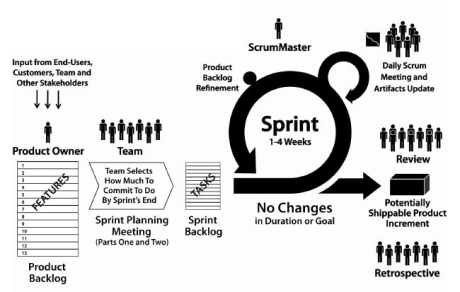When life is going smoothly, we don’t think about insurance. However, human life can never be without a risk. The best way to deal with uncertain event is to get insured.
Insurance is a form of risk management, primarily used to hedge (technique designed to reduce or eliminate financial risk) against uncertain loss. An insurer, or insurance carrier, is a company selling the insurance; the insured, or policyholder, is the person or entity buying the insurance policy.
The amount to be charged for a certain amount of insurance coverage is called the premium. The insured receives a contract, called the insurance policy, which details the conditions and circumstances under which the insured will be financially compensated.
A deductible is a sum of money a person pays (during claims) before a company will provide the benefits outlined in an insurance policy. The amount varies, with lower deductibles generally associated with higher premiums. The main purpose of a deductible is to prevent people from making claims when the cost associated with a loss, damage or need is fairly small. This leaves the company more time and financial resources to handle more costly claims.
A deductible is a sum of money a person pays (during claims) before a company will provide the benefits outlined in an insurance policy. The amount varies, with lower deductibles generally associated with higher premiums. The main purpose of a deductible is to prevent people from making claims when the cost associated with a loss, damage or need is fairly small. This leaves the company more time and financial resources to handle more costly claims.
Each insurance company has its own set of underwriting guidelines to help the underwriter (The name derives from the Lloyd's of London insurance market) determine whether or not the company should accept the risk. The underwriters may either decline the risk or may provide a quotation in which the premiums have been loaded or in which various exclusions have been stipulated, which restrict the circumstances under which a claim would be paid. Depending on the type of insurance product (line of business), insurance companies use automated underwriting systems to encode these rules, and reduce the amount of manual work in processing quotations and policy issuance.
Coverage Limit?
It's the highest dollar amount insurer will pay if you make a claim on a "covered loss."
Most important types of insurance are: Auto insurance, Life Insurance, and Property Insurance. List of Insurance Types
Coverage Limit?
It's the highest dollar amount insurer will pay if you make a claim on a "covered loss."
Most important types of insurance are: Auto insurance, Life Insurance, and Property Insurance. List of Insurance Types
Auto Insurance (Car):
The premium may vary depending on many factors like car characteristics (cost, make, year, customization cost, telematics), the coverage selected (deductible, limit, covered perils), the profile of the driver (age, gender, marital status, driving history, credit rating) and the usage of the car (commute to work or not, predicted annual distance driven).
Types of Auto Coverages:
Liability coverage also known as “bodily injury/property damage (BI/PD).” This coverage doesn't protect you or your car directly. Bodily injury liability coverage may help pay the costs if people are injured or killed in a covered accident you cause. This may include medical expenses, loss of income and, in some cases, legal fees if you are sued. Property damage liability insurance helps pay for damage done to someone’s property as the result of a covered accident for which you are responsible. It may help cover the expense of repairing or replacing a car, fence or other property damaged during the covered incident.
Collision coverage (COLL):
Unlike liability insurance, which may cover damage to other vehicles or property, collision auto insurance helps to repair your vehicle if you are at fault in a covered accident. While collision may not be required by law, it’s a smart coverage for vehicle owners. Additionally, most banks and car dealerships require collision coverage for financed or leased vehicles.
Comprehensive coverage (COMP):
Comprehensive car insurance coverage pays for damage caused by covered events other than a collision with another vehicle, such as vandalism or hail damage, fires, civil commotions or explosions and falling objects such as tree branches or debris.
Uninsured Motorist Coverage(UM):
Uninsured motorist insurance may help protect you against drivers who don’t have liability insurance or lack the money to pay for injuries and damages they cause to you, your passengers or your car. There are two basic components of uninsured motorist coverage. Uninsured motorist property damage (UMPD) coverage pays for covered damages to your car or other property. Uninsured motorist bodily injury (UMBI) coverage pays for covered medical expenses, lost wages and other damages experienced by you or your passengers in a covered accident.
Underinsured Motorist Coverage (UIM):
Underinsured Motorist Coverage helps when the driver at-fault has insufficient liability insurance. Underinsured motorist bodily injury (UIMBI) coverage may pay for you and your passengers’ lost wages, medical expenses and other expenses that exceed the limits of the underinsured driver’s policy in a covered incident. Underinsured motorist property damage (UIMPD) coverage may pay for damage to your car or other property, such as a fence or mailbox, in a covered incident that exceeds the limits of the underinsured driver’s policy.
Medical Payments Coverage (aka Med Pay):
Med pay coverage helps pay medical costs for you and your passengers in the event of a covered auto accident. This may include hospital and ambulance bills, as well as doctor visits and other necessary medical treatments. Medical payments coverage usually covers only those expenses not covered by health insurance, such as copayments, deductibles, etc.
Personal Injury Protection Coverage (PIP):
Personal injury protection may pay medical expenses and other expenses such as lost wages, rehabilitation services, funeral costs and services, such as childcare, that you may be unable to perform due to injuries from a covered accident. Med Pay coverage doesn't cover these other expenses.
Gap Coverage:
Gap coverage applicable if the car has loan or lease. If your insured car is totaled in an accident, or stolen and unrecovered, your auto insurance may give you a settlement based on the car’s actual cash value (ACV), not what you paid for it. Gap coverage may pay the difference between the balance of a lease or loan due on a vehicle and what your insurance company pays if the car is considered a covered total loss.
Let’s say your car cost $35,000 when new, and you currently owe $30,000. If the car is totaled, the ACV of the vehicle may be only $25,000. You have a deductible of $500, so the car accident settlement is $24,500. Your gap insurance may pay the remaining $5,500 on the loan instead of having to come up with the money yourself.
Roadside Assistance Coverage:
Roadside Assistance coverage provides towing to the nearest qualified repair facility and covers a specified amount of the necessary labor at the place of breakdown when your automobile is disabled due to any of the following:Mechanical or electrical breakdown, flat tire, Dead battery, Insufficient fuel.
Rental Reimbursement Coverage:
How will you get around after an accident? Rental Reimbursement Coverage reimburses you for the cost of renting a car while yours is in the shop. For example, rental reimbursement coverage defined as 30/600 provides a maximum of $30 per day and an overall maximum of $600 during the entire time the vehicle is being repaired.
References:
- http://en.wikipedia.org/wiki/Insurance
- http://en.wikipedia.org/wiki/Vehicle_insurance_in_the_United_States
- http://www.wisegeek.com/what-is-a-deductible.htm
- http://www.nationwide.com/auto-insurance-coverage.jsp


